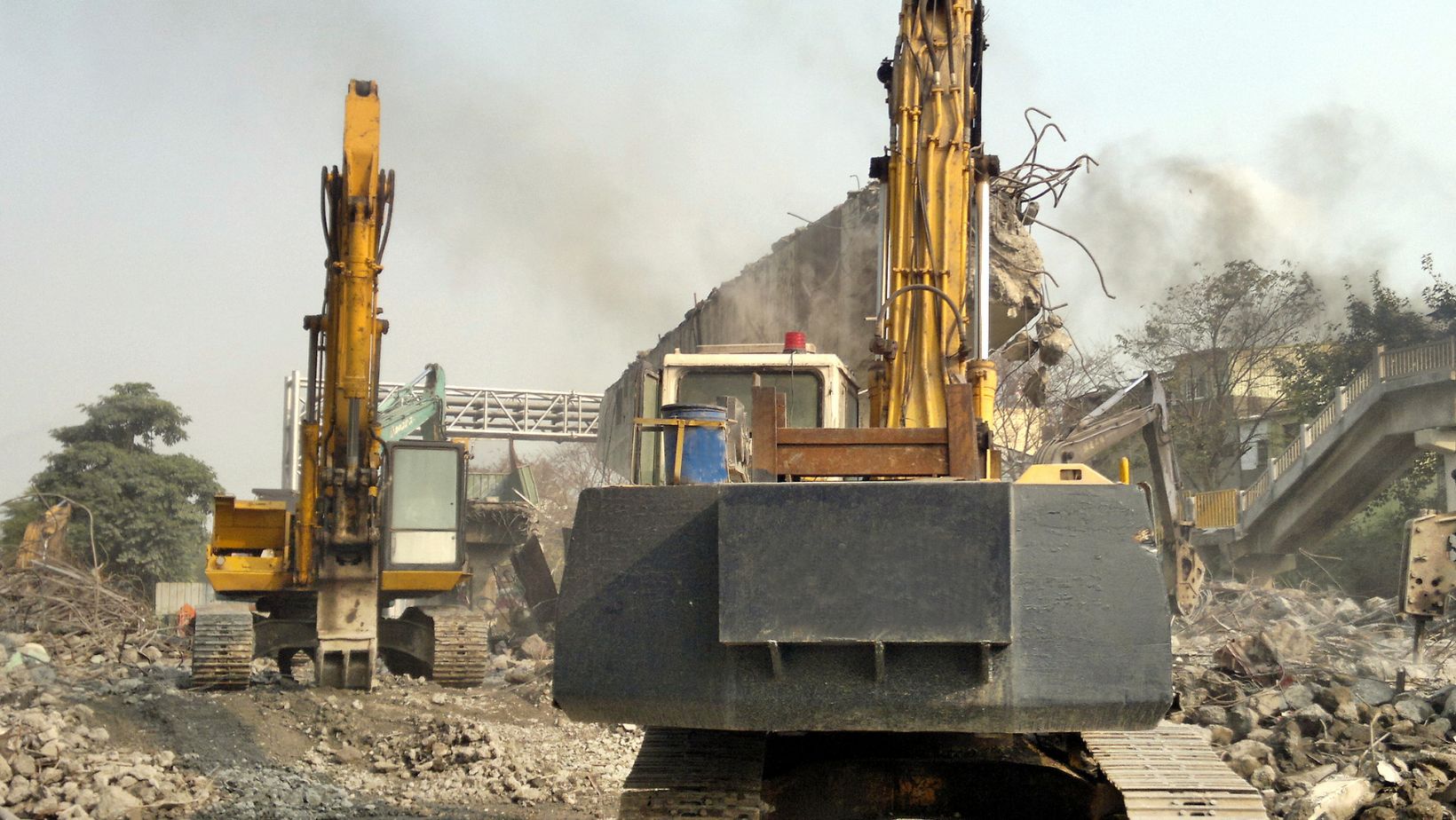
Concrete and drywall, wood, glass, and metal scraps—the mess left behind after a project is often overwhelming. Don’t have a clear plan for dealing with this waste? It can quickly pile up, delay your progress, or result in fines and extra costs.
With even small residential renovations producing surprising amounts of waste, buying into what qualifies as construction debris, how to manage it properly, and your disposal options can save you time, money, and frustration.
Common Types of Construction Debris
Construction and demolition (C&D) debris is often a mix of materials, each with its own rules for disposal and recycling. Start with which items are recyclable or reusable to generate a more efficient plan for debris removal—from day one.
Wood, Drywall, and Insulation
These materials make up a large portion of residential construction waste—unpainted wood and clean drywall are often targeted for recycling and repurposing.
Unfortunately, treated wood, moldy insulation, or materials containing asbestos need to be handled and often require specialized disposal.
Insulation, in particular, poses health risks if it’s not removed or stored the right way—especially in older homes.
Concrete, Brick, and Asphalt
Heavy and bulky, these materials are usually generated during demolition or remodeling projects. The good news is that concrete and asphalt can often be crushed and reused as base materials for roads or driveways.
- Just make sure you’re working with a licensed recycler—some municipalities also offer incentives for reusing masonry materials to reduce the volume going to landfills.
Metals, Glass, and Plastics
Steel beams, copper pipes, and aluminium window frames—all perfect examples of scrap metal typically recyclable that you can even sell for money.
Although mixed materials—e.g. windows made of both glass and aluminium—can make recycling more difficult, glass and some plastics may also be recyclable. To prevent contamination at recycling facilities, take the effort to properly separate recyclables.
Regulations and Legal Responsibilities
You are legally liable for the disposal of your building trash if you are the homeowner or project manager. Although local regulations differ, there are some broad guidelines that you should be aware of. Project delays and expensive fines can be avoided by being aware of these regulations beforehand.

Before you start, find out if you require a debris management plan from your municipality—proof that a specific proportion of materials will be recycled is required by several localities.
There may be penalties or delays in permit applications if certain standards are disregarded. To keep your contractor’s trash plan in line with local regulations, it’s also beneficial to review it.
Hazardous Materials
Paint cans, treated wood, asbestos, and certain adhesives are considered hazardous. These materials must be separated from general debris and taken to a certified hazardous waste facility.
Throwing them in a general dumpster is not only illegal but dangerous. Improper handling can also pose health risks for workers and nearby residents.
Dumping and Illegal Disposal
Dumping debris on public land or in unauthorized areas is a serious offense. Always hire licensed haulers or use approved disposal facilities. Many regions track loads with manifests to remain compliant. In some areas, fines for illegal dumping can reach thousands of dollars.
Sorting, Storing, and On-Site Management
Proper sorting of debris not only makes recycling easier but can also reduce hauling costs. You may even find that some materials are reusable on your current project. A little organization upfront can save time and prevent problems later.
Keep your site clean by setting up labeled areas for wood, concrete, metal, and general waste. This keeps disposal efficient and prevents cross-contamination that could disqualify recyclable materials. These zones should be easily accessible and protected from the weather to avoid material degradation.
Use Roll-Off Containers Wisely
Roll-off dumpster rental options come in various sizes and are key for efficient site management. Choose separate containers for recyclables and general waste to avoid extra sorting fees at disposal sites. Communicate clearly with workers or subcontractors so everyone knows which materials go where.
Track Your Waste
Keep track of what you’re throwing out. Know how much of it you’re throwing away, and where it’s going. Most local building codes do require waste reporting or diversion targets, so this should be a part of your standard practice.
Stay organised and supply documents as required with the use of smartphone apps and digital tracking tools.
Disposal and Recycling Options
Thanks to advancements in recycling and the growing demand for sustainable practices, professional disposal and recycling is more accessible to homeowners—not just contractors.
Professional haulers save time and effort, in particular if they’re familiar with local recycling centers. Look for providers that sort debris for you and offer diversion reporting. Ask if they offer bundled packages that include both hauling and dumpster rental.

Nowadays, a lot of cities have special C&D recycling facilities where you can drop off sorted waste—these usually take metal, wood, concrete, and occasionally even plasterboard or insulation. Contact beforehand and clarify permitted materials because fees vary depending on the type of material.
Donate or Repurpose Usable Materials
Habitat for Humanity ReStores and similar programs often accept leftover materials in good condition.
- Old cabinets, doors, sinks, and wood flooring can often find a second life in another home.
Donating not only reduces waste but can also earn you a tax deduction.
Planning Ahead: Minimizing Debris From the Start
With a bit of planning, you can avoid waste altogether before the first nail is even hammered. Improve efficiency from the beginning and save money on material and disposal costs.
Use software or consult with your contractor so that you’re ordering the right quantity of materials. Overstocking leads to surplus that often ends up in a landfill. Rechecking your supply list before finalizing orders can prevent unnecessary excess.
Choose Recyclable and Reusable Materials
Opt for building supplies that have recycling markets. Some tips to consider:
- Metal roofing instead of asphalt shingles.
- Engineered wood instead of pressure-treated lumber.
Some products even come with take-back programs, allowing you to return unused portions to the supplier.
Work With Green-Certified Contractors
You can reduce the amount of accumulated waste and get advice on some of the optimal methods from contractors with experience in sustainable construction.
Seek out those who hold certifications such as NAHB Green or LEED—unlike typical homeowners, these specialists frequently have access to specialised recycling networks.
Conclusion
What types of debris you’ll encounter, how to handle each one, and what your legal obligations are is key in turning a chaotic process into a manageable one. Proactive planning lets you control the job site and avoid last-minute stress.
Regulations are tightening around sustainability with debris management at the pinnacle of compliance—plan ahead, sort smart, and take advantage of modern recycling options. Make your next project more efficient with small changes that bring long-term benefits for your community and the planet.






